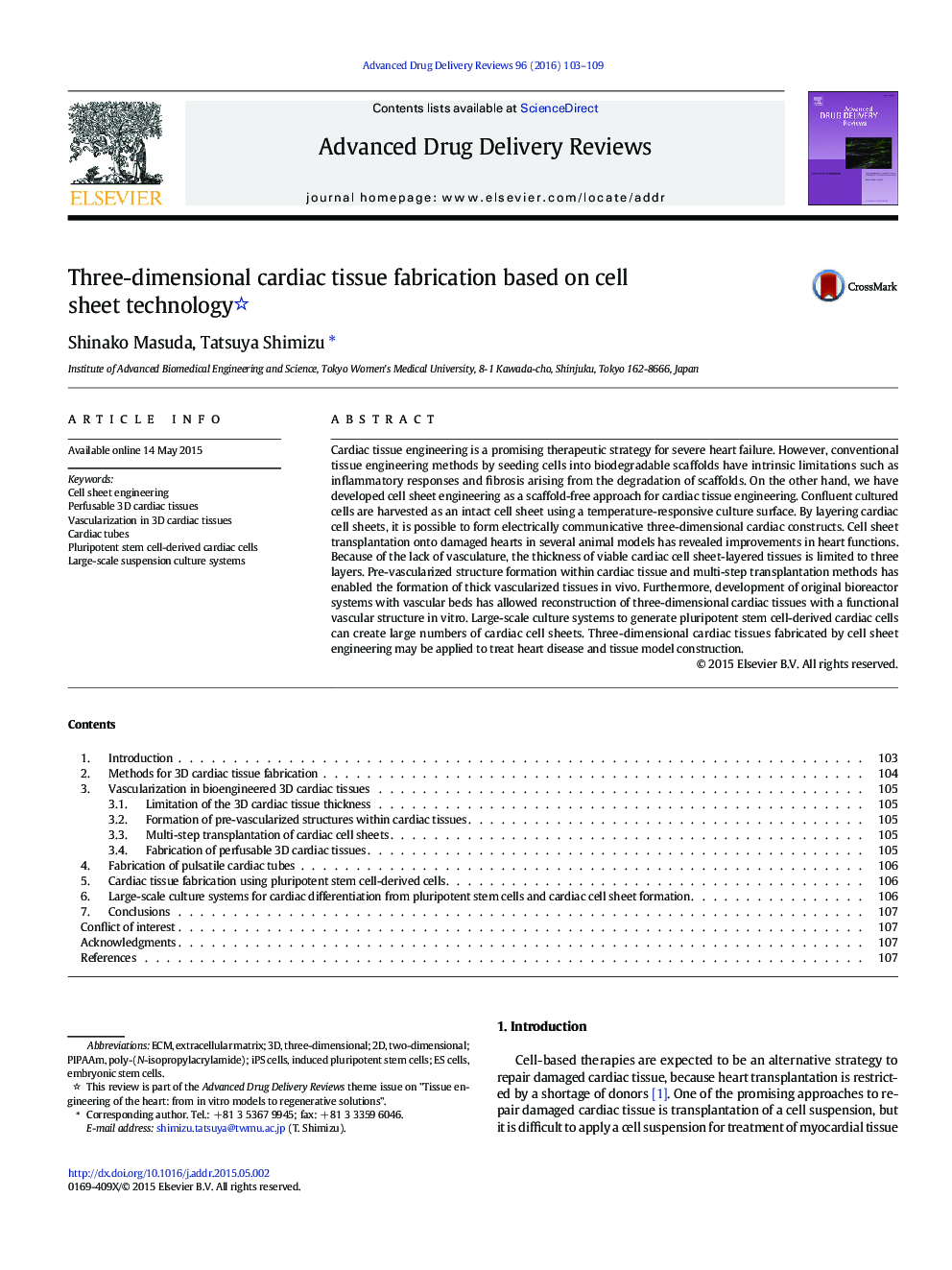| Article ID | Journal | Published Year | Pages | File Type |
|---|---|---|---|---|
| 2070799 | Advanced Drug Delivery Reviews | 2016 | 7 Pages |
Cardiac tissue engineering is a promising therapeutic strategy for severe heart failure. However, conventional tissue engineering methods by seeding cells into biodegradable scaffolds have intrinsic limitations such as inflammatory responses and fibrosis arising from the degradation of scaffolds. On the other hand, we have developed cell sheet engineering as a scaffold-free approach for cardiac tissue engineering. Confluent cultured cells are harvested as an intact cell sheet using a temperature-responsive culture surface. By layering cardiac cell sheets, it is possible to form electrically communicative three-dimensional cardiac constructs. Cell sheet transplantation onto damaged hearts in several animal models has revealed improvements in heart functions. Because of the lack of vasculature, the thickness of viable cardiac cell sheet-layered tissues is limited to three layers. Pre-vascularized structure formation within cardiac tissue and multi-step transplantation methods has enabled the formation of thick vascularized tissues in vivo. Furthermore, development of original bioreactor systems with vascular beds has allowed reconstruction of three-dimensional cardiac tissues with a functional vascular structure in vitro. Large-scale culture systems to generate pluripotent stem cell-derived cardiac cells can create large numbers of cardiac cell sheets. Three-dimensional cardiac tissues fabricated by cell sheet engineering may be applied to treat heart disease and tissue model construction.
Graphical abstractFigure optionsDownload full-size imageDownload high-quality image (65 K)Download as PowerPoint slide
